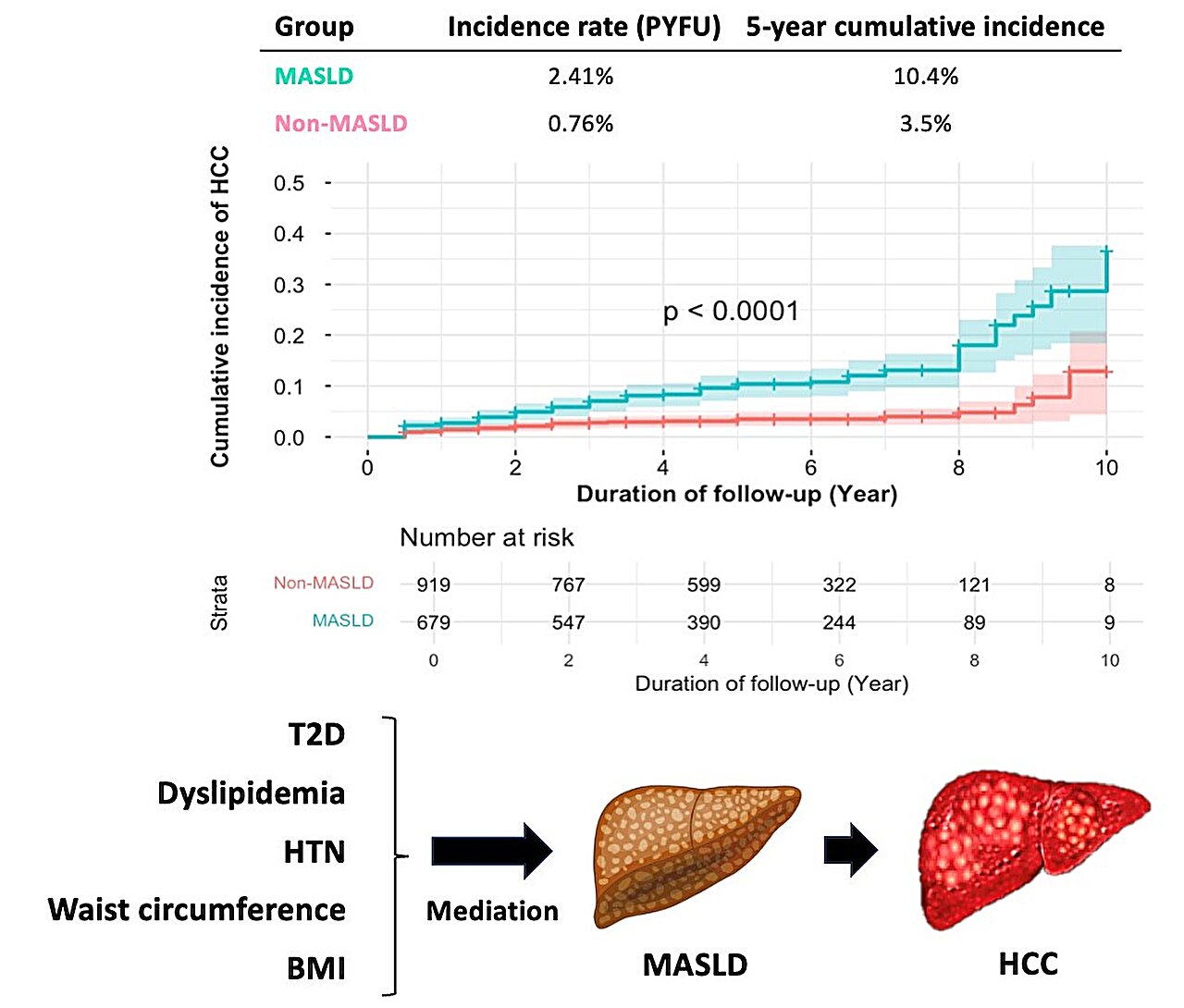Hepatitis C virus (HCV) infection is highly associated with the development of metabolic dysfunction-associated steatotic liver disease (MASLD), with a diagnosis requiring the presence of steatotic liver disease (SLD) along with at least one of five cardiometabolic risk factors (CMRFs), including obesity, arterial hypertension (HTN), type 2 diabetes (T2D)/prediabetes, and dyslipidemia.
This multicenter study published in the Journal of Hepatology, which recruited 1,598 eligible participants in Taiwan, aimed to evaluate the role of MASLD in the long-term risk of de novo hepatocellular carcinoma (HCC) among individuals cured of HCV following treatment with direct-acting antivirals (DAAs).
Over a median follow-up of five years, patients with MASLD had an approximately two-fold higher risk of developing hepatocellular carcinoma (HCC) compared to those without MASLD, after adjusting for known HCC risk factors, including age, sex, liver stiffness measurement (LSM), platelet count, alanine transaminase (ALT) quotient, and alpha-fetoprotein (AFP).
Additionally, the estimated risk remained similar after adjusting for competing risks of death. More than 99% of participants with SLD also presented with MASLD, suggesting a strong link between SLD and metabolic derangement in HCV-infected individuals. Mediation analysis showed that MASLD mediated all CMRFs in the development of HCC.
"This study highlights the importance of MASLD in HCC development, although the overall HCC incidence tends to decrease following HCV cure. In addition to prudent HCC screening in at-risk populations, lifestyle modification and aggressive management of CMRFs are crucial to mitigating the development of MASLD," says Prof. Jia-Horng Kao, a member of the research team.
"Moreover, novel therapeutic drugs targeting the hepatic microenvironment, such as thyroid hormone receptor beta (THRβ) agonists, may play an important role in modifying HCC risk in these patients."
MASLD mediates all CMRFs, contributing to HCC development. Lifestyle modification, effective control of CMRFs, and judicious HCC screening for at-risk populations are essential to reduce and enable early detection of HCC during post-HCV cure follow-up.
More information: Chen-Hua Liu et al, Risk of de novo HCC in patients with MASLD following direct-acting antiviral-induced cure of HCV infection, Journal of Hepatology (2024). DOI: 10.1016/j.jhep.2024.09.038
Provided by National Taiwan University


